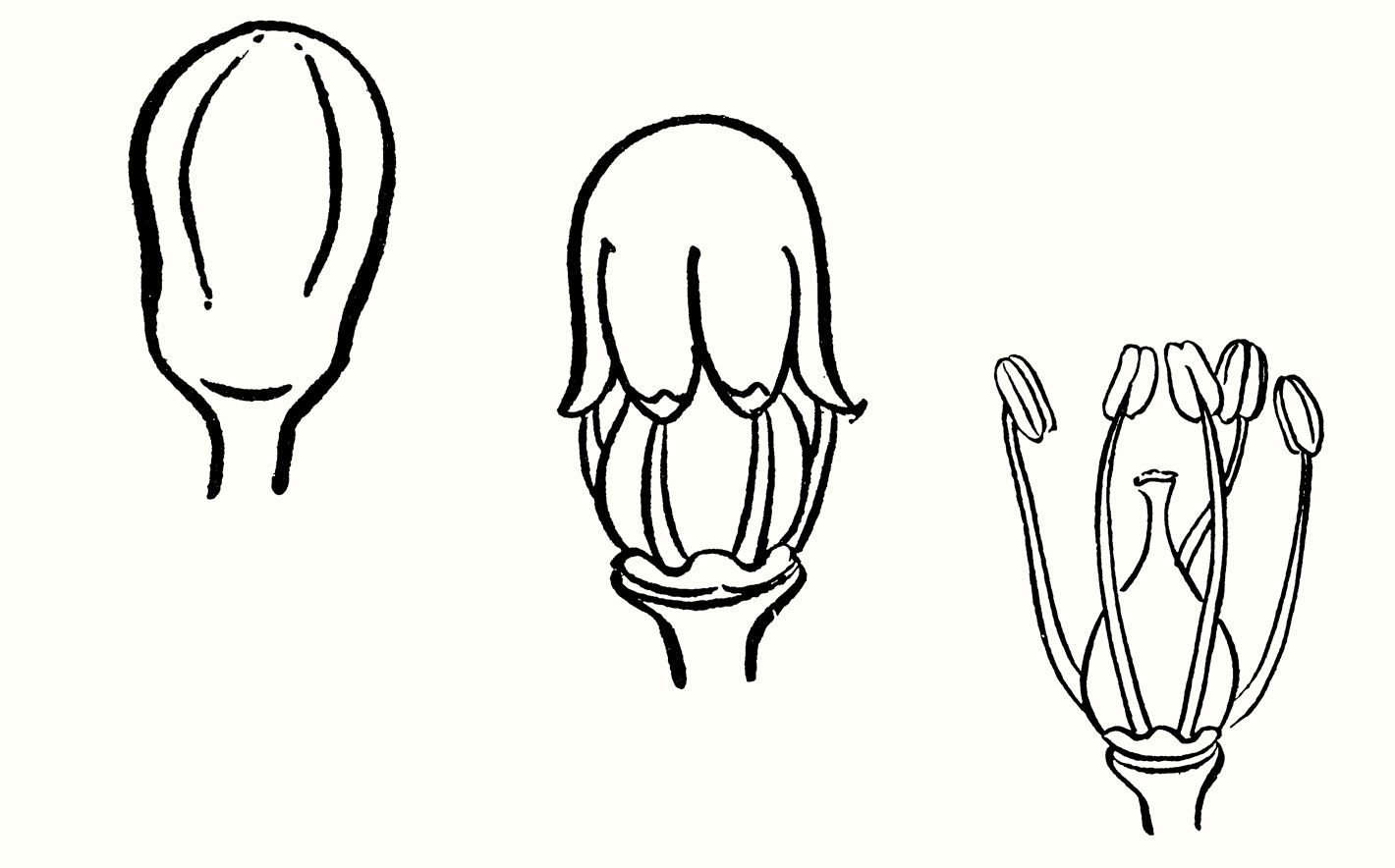
“Of all the moments in the annual growing cycle of the grapevine, flowering is the least noticed and yet the most defining.”
—Chris Howell
Surprisingly, most wine lovers have no idea how or where the grape cluster forms on a vine. And even many extremely knowledgeable wine connoisseurs know very little about flowering. Still more surprising, many New World winemakers, who buy their grapes (or “source” their fruit, as they like to say), may not even be aware when their vines are flowering.
Of all the moments in the annual growing cycle of the grapevine, flowering is least noticed and yet the most defining.
To the casual observer, flowering happens privately, almost in secret, with no apparent signal. The vines have been growing for several weeks. The shoots are now a couple of feet long and finally are growing rapidly; each day they might add another inch or two. The foliage appears to fill the trellis. The flower clusters are hidden under the leaves—that is, unless one looks carefully.
For many weeks, these nascent clusters are quite unremarkable. Each flower is just a tiny unopened bud—at first, vanishingly small, as small as a poppy seed, about the size of this asterisk: * Just before bloom, the individual flower will have grown to the size of a fat sesame seed, about the size of this zero: 0.
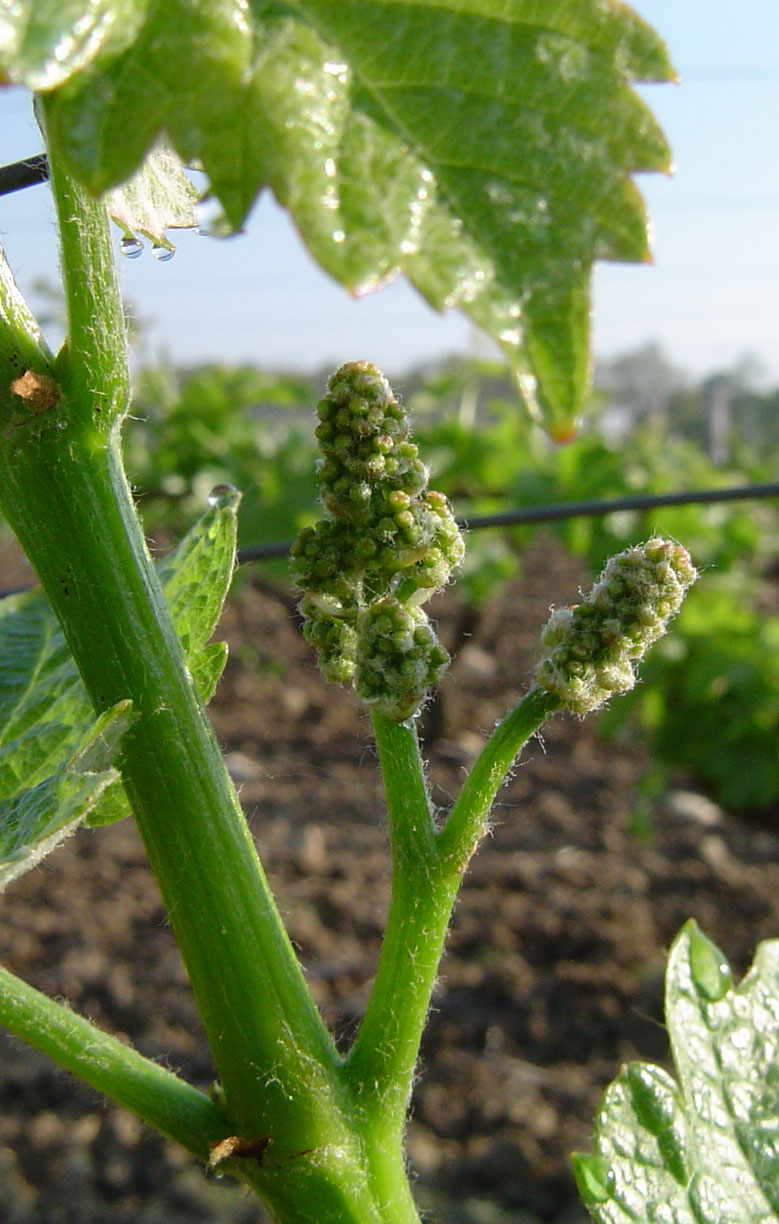
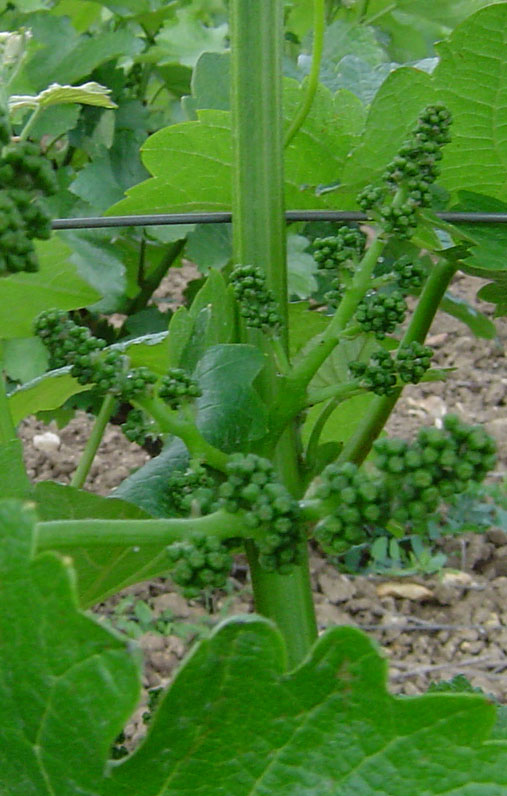
Above left: In the Springtime, the new cluster is barely apparent. Above right: As the vine grows, so too does each flower bud. Photos by Florence Dagueneau, 2008, Dom. Serge Dagueneau et Filles, Pouilly-sur-Loire, France.
Because they are so tiny, it is easy to understand why so little attention is paid to these flowers, and yet flowering is the critical moment in the entire cycle. The moment of flowering is the single most controlling factor of the timing of harvest (early or late) and thus the odds of achieving full ripeness. Moreover, the conditions of flowering are the primary factor controlling the quantity and uniformity of the harvest.
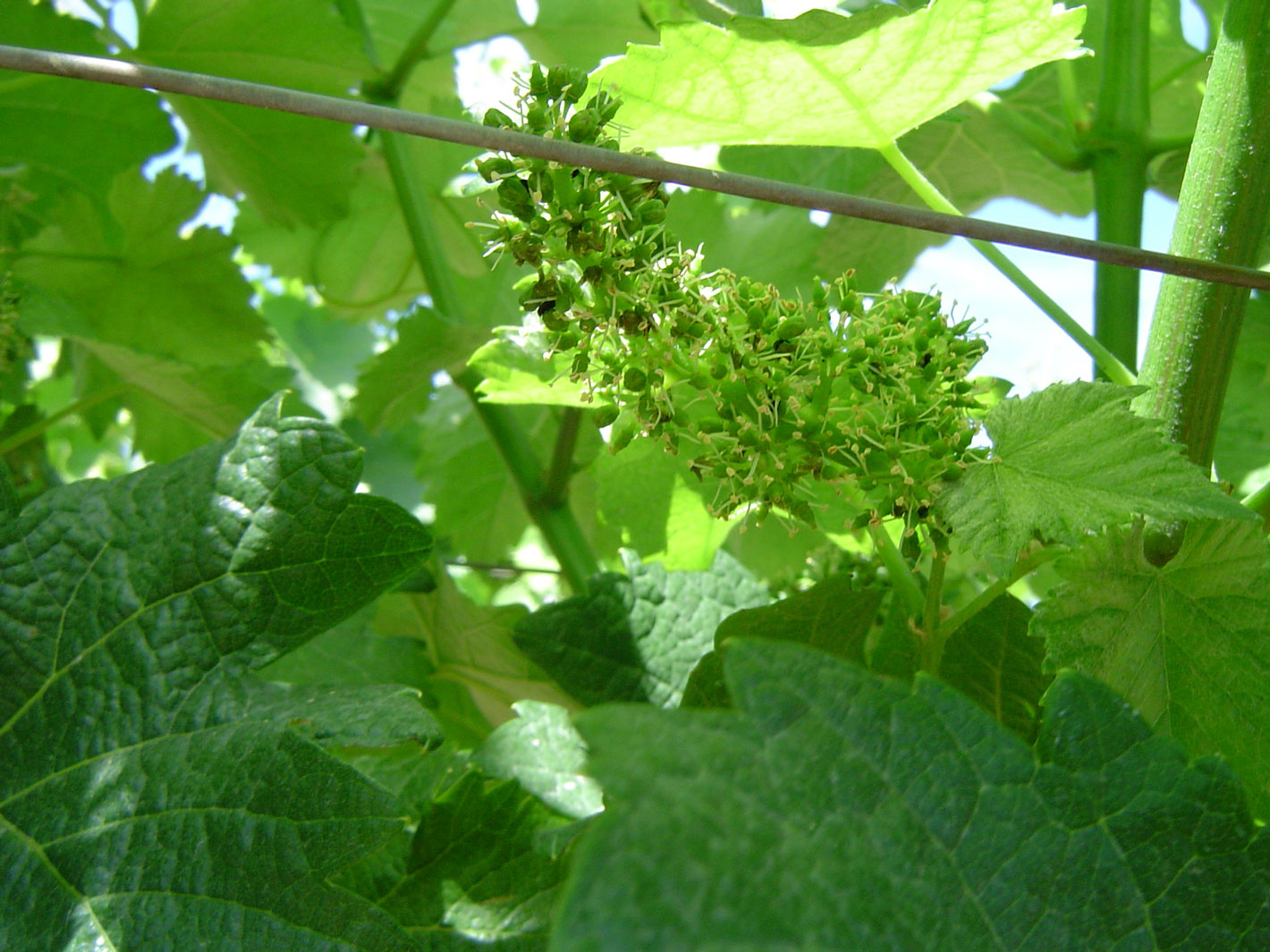
Imagine a perfect day in early summer. The morning is refreshing but not cold, and the afternoon warms up nicely under sunny skies, but it is not hot. A gentle breeze caresses the skin. Walking in the vineyard, amid the most delicate, ethereal perfume, so delicate that at first, you don’t notice, but then it pings your consciousness. Attention aroused, you take a peek amid the foliage and there you see the tiny flowers open, five minute stamens surrounding each pistil. With a hundred or more flowers, the cluster appears gauzy, enveloped in a delicate fur. It is a happy moment.
That is the ideal scenario. Naturally, things don’t always work out this way. First, the individual flowers on a cluster do not all open simultaneously. And then, certain clusters may be somewhat in advance of others on the same vine. Between vines, the differences can be even greater. If the temperatures are unseasonably cool, the flowering can begin slowly, and the last flowers may not open for a couple of weeks after the beginning of bloom. A protracted bloom will inevitably lead to less uniform ripening.
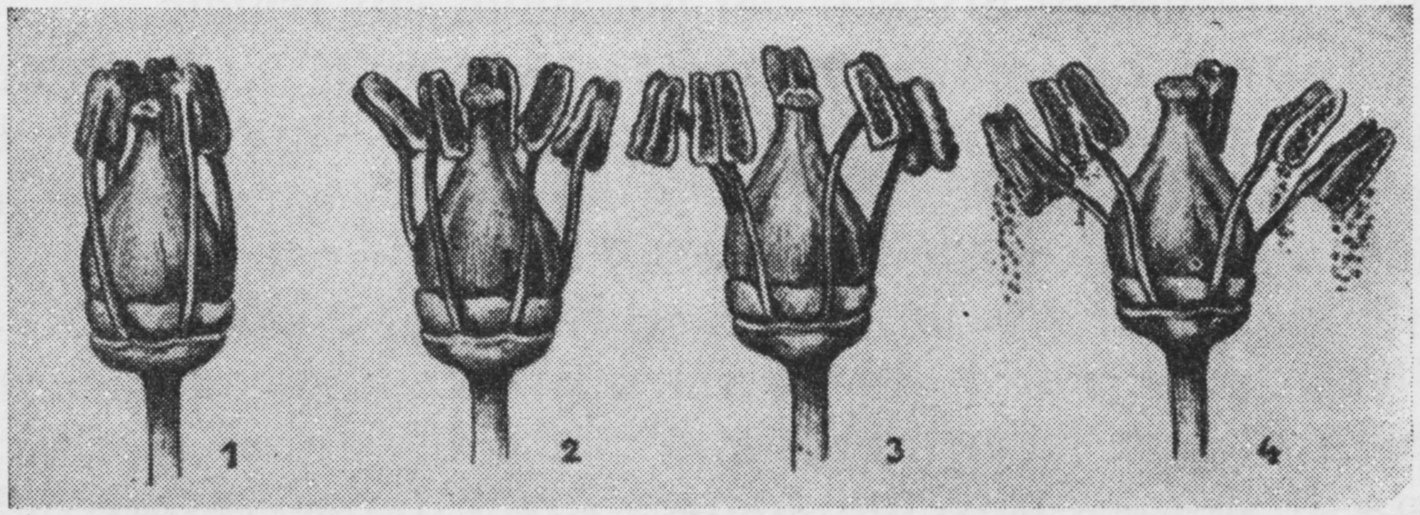
No bees are required to produce grapes. If a flower becomes successfully pollinated, the odds are that it pollinated itself. The flowers of Vitis vinifera are hermaphroditic and they are normally self-pollinating. Once pollinated, an ovary will begin to form a seed. The flesh at the base of the flower, surrounding the seed begins to swell into a tiny berry. Each flower holds four ovaries and thus can form up to four seeds—the more seeds, the larger the berry will grow.
Even under the best of conditions, not all of the flowers will be successfully pollinated. Many will abort; they will dry up and fall off. And not all the berries will contain four seeds. A good average is when about half of the flowers eventually form berries. Especially, up at Cain, the berries may hold just two seeds. The berries will be smaller, and the wine more intense. Grapevines can be temperamental, certain varieties, certain selections, especially so. If it is too hot and the vines have too much water, they will be growing rapidly and the energy that should have gone to the flowers goes instead to the growing shoot. The flowers, forgotten by the vine, simply fall off. On the other hand, if the weather is cool, the vine is producing less energy, and again the flowers are simply not as fertile. In the worst case, the result can be almost no crop at all. This happened in one of our blocks of Malbec in 2011.
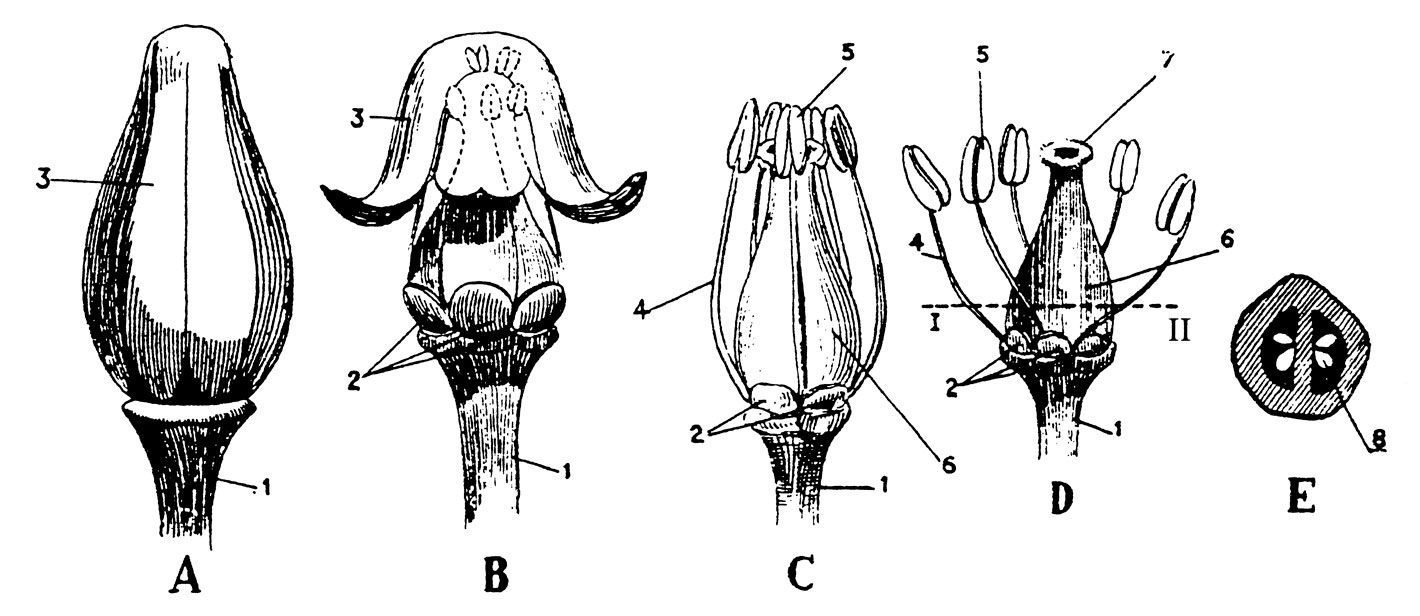
At first, the berries don’t look much different than the flower buds that came before—except that now there are many fewer, so the cluster appears scanty or even ragged. After a couple of weeks, the clusters become recognizable, although the berries are hard and green, and still not much larger than a pea. Over the course of the summer, the berries continue to grow, and the definitive grape cluster begins to form.
A sense of mystery surrounds flowering. Many growers leave the vines alone during this sensitive moment. They will not train the shoots or spray the leaves; they will not cultivate the soil. Is it superstition, intuition, or common sense? Even when Science has explained so much, the essential mystery of life remains. As in the case of Biodynamics, some winegrowers have revived an awareness and attention to the astrological calendar of their distant ancestors.
Who can blame them? It is clear that industrial agriculture and the science of agronomy do not provide all the answers.
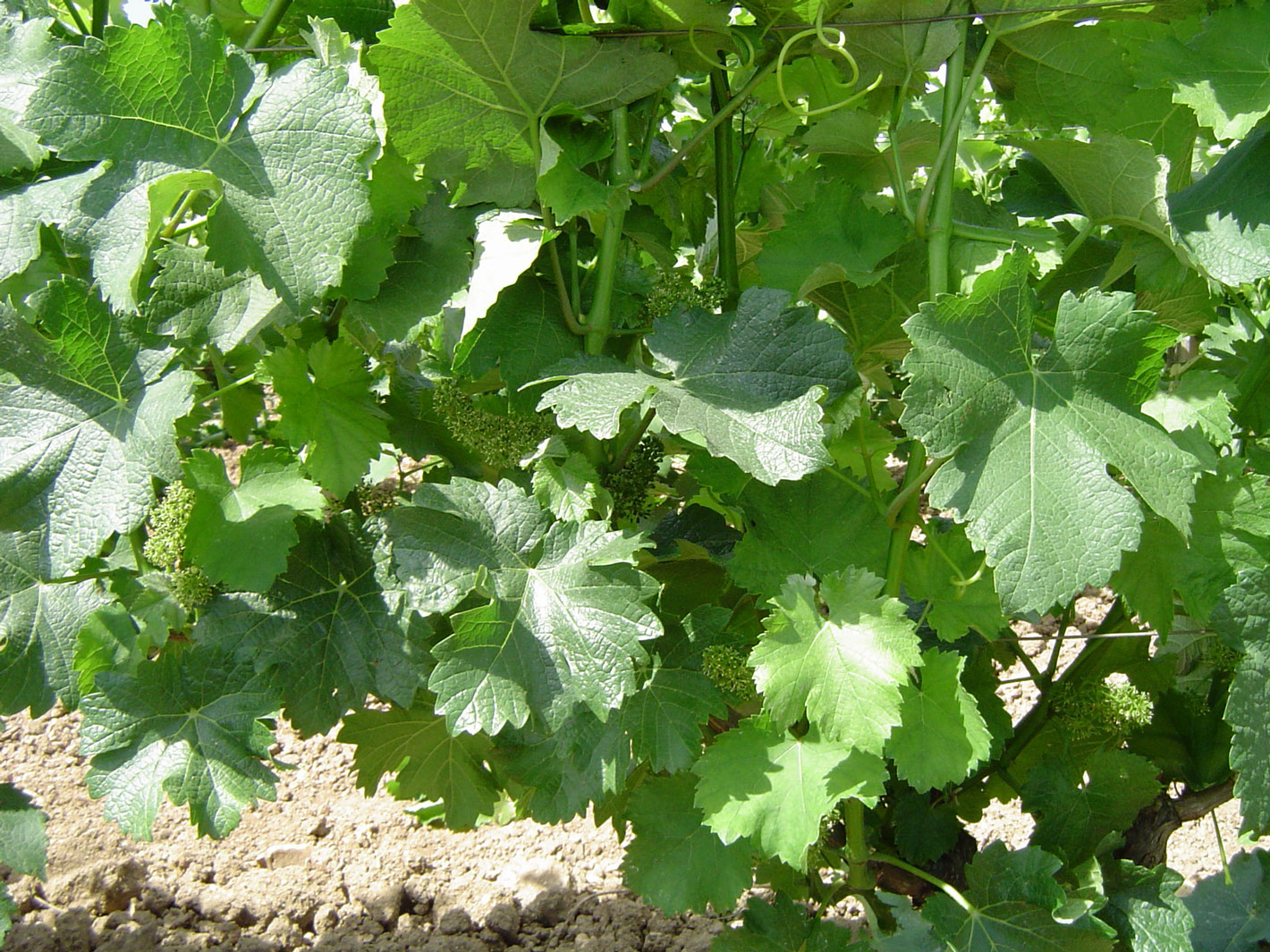
Besides the intrinsic fascination, there is also a very immediate and practical reason to attend to the flowering. As we observe the process unfold, we will learn what to expect at harvest time, and when to expect it. There may be many berries or very few. The berries may have all formed at nearly the same time, or their formation may be widely separated in time, and each berry may be at a slightly different stage. The clusters may be full and compact, or they may be loose and ragged. All of these factors will inform our choices later in the summer, when we thin the crop.
The timing of flowering will tell us much about when to expect the harvest. Like all other pregnancies, ripening of the fruit is subject to a period of gestation and requires a certain number of days. How many days are required will be somewhat influenced by the yield (higher yield will require more time), the health of the vine, and the weather during ripening. Another key factor is the winemaker, and how ripe she or he would like the grapes. A rule of thumb is between 110 and 120 days, however ripening can occur in as few as 90 days and may require up to 140 days or so. It is about the weather, but it is also about yield, and about the health of the grapevine. For example, if flowering happens at the end of May, we can expect to harvest in mid-late September, but if flowering is delayed until the end of June, we may not finish picking until early November, because ripening weather of September-October will usually be somewhat cooler than August-September.
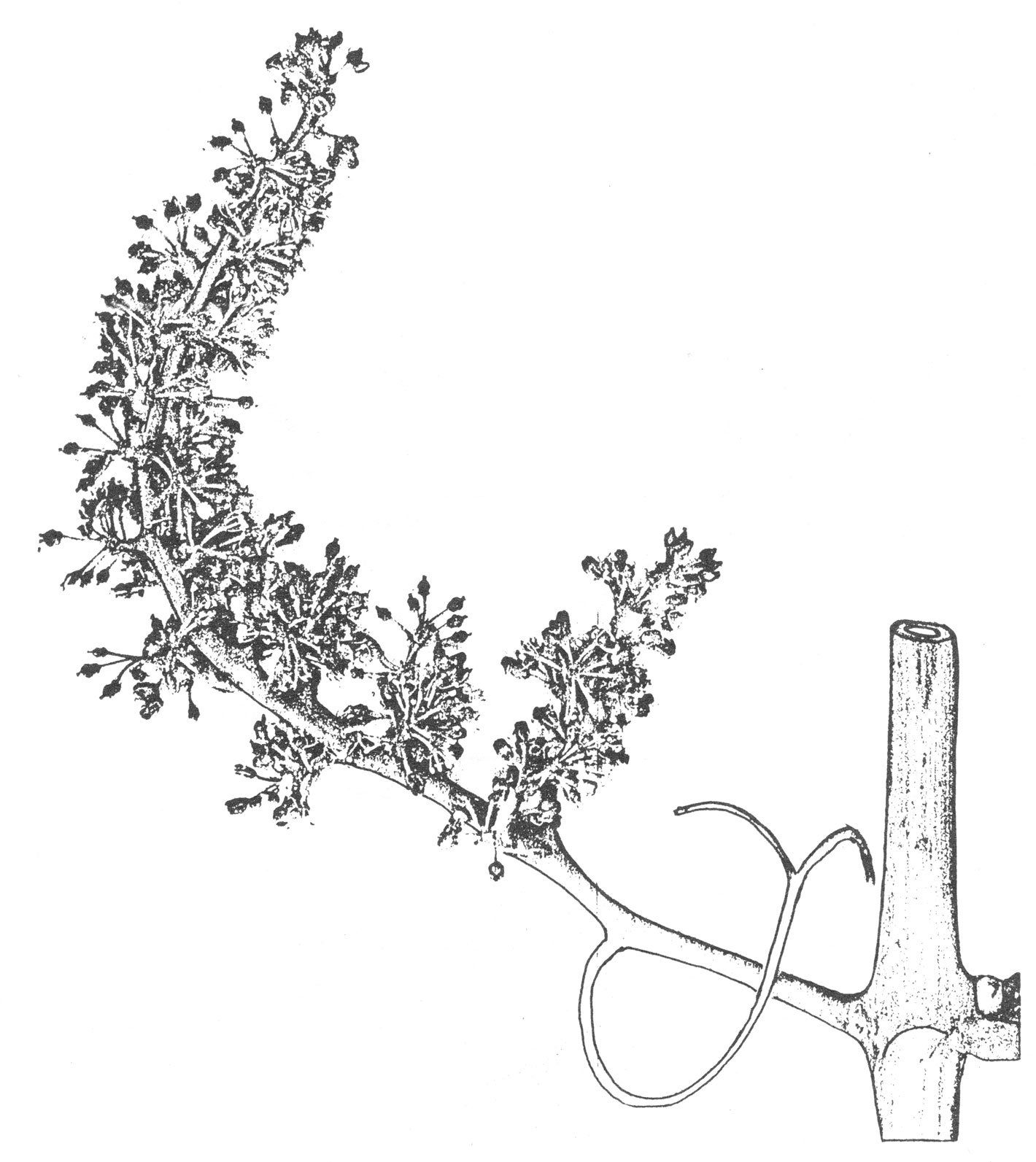
In the past few years, occasionally, one reads frightening stories, both in the popular press and in scientific journals, about how the Napa Valley wines have been—or will be—impacted by Global Warming. A group of us fellow winegrowers responded to these reports by saying, in effect, “Clearly Global Warming must affect our vineyards and we should do everything we can to study the situation.” We have worked to establish baseline conditions, and to assess what local climate change has occurred thus far. Moreover, we plan to attempt to predict what we can expect over the next few decades, and to entertain discussions in the Napa Valley about measures available to adapt to changes we anticipate. This subject merits an entire essay, which I will save for another time. One of the most valuable conclusions of our initial study is that, far more important than temperature data, are our records of the behavior (the phenology) of our grapevines. In other words, how have the vines responded to climate change? Each of the biological stages in the annual growing cycle of a grapevine gives us a natural signal of climate change. Moreover, when we consider climate change in the Napa Valley, is not how the vine grows and thus how the wine tastes, our primary concern?
It turns out that while the beginning of growth, Budbreak, can tell us a little bit, it is Bloom, the timing of flowering, that is a very useful and reliable indicator of how climate changes affect grapevine development. Based on limited data that reach back almost 60 years, we cannot yet discern a clear trend in Bloom. Growers in the Napa Valley began recording much more data in the 1990s, and, based upon the last twenty years, we have mixed results: certain varieties in certain districts show earlier bloom, while other districts appear to have later bloom. In other words, the signal of climate change in the Napa Valley may not be as strong as some reports might lead us to believe*.
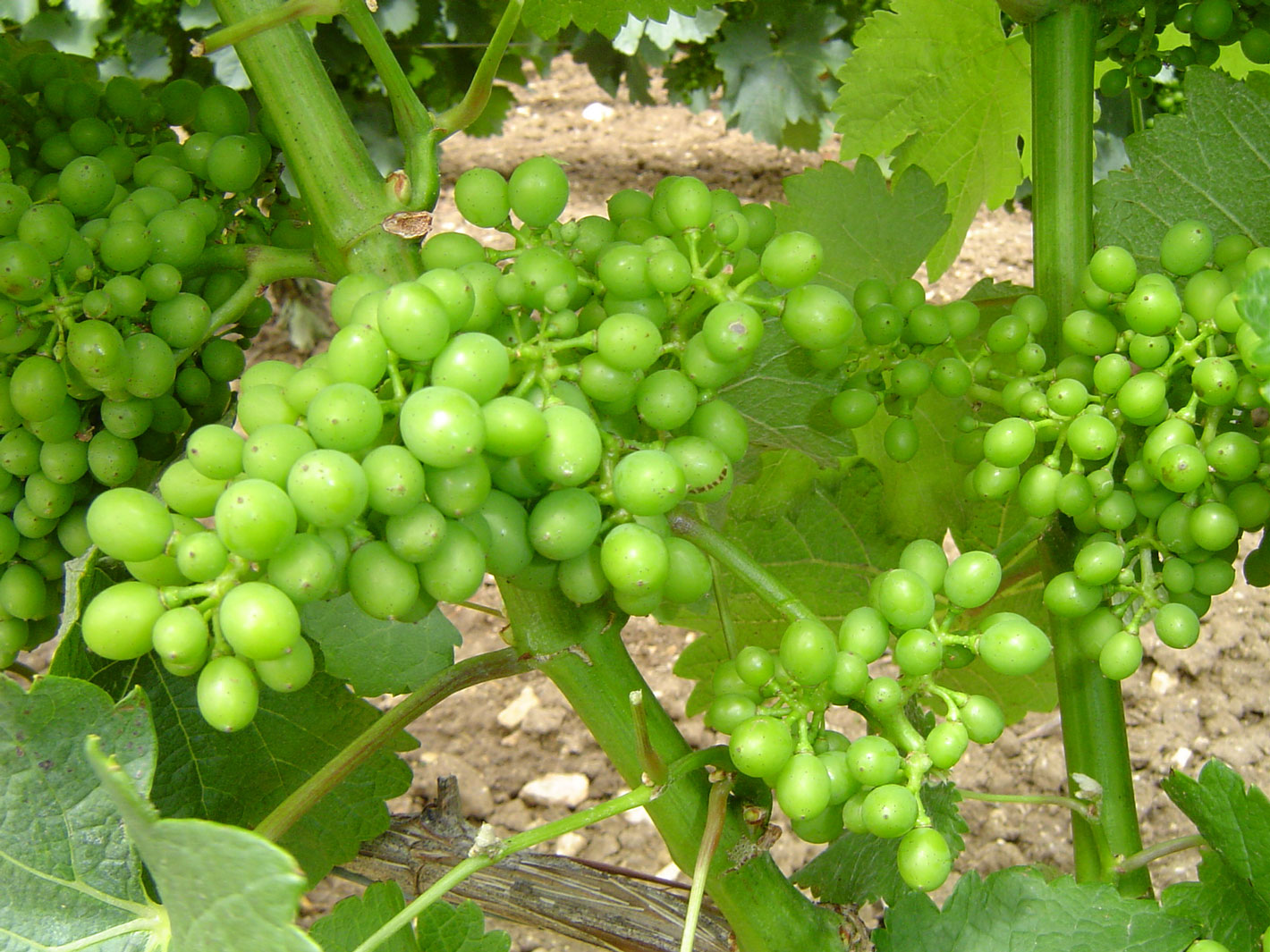
That being said, it appears that, along with the timing of Bloom, the interval between Bloom and Veraison, when the berries turn purple and ripening begins, may also be a reliable indicator of climatic changes in the vineyard. Here in the Napa Valley, Cabernet Sauvignon usually needs about 70 days post Bloom to reach Veraison. Our data is variable and contradictory depending on the appellation. For example, we see the interval may be lengthening in St. Helena and Rutherford, while it may be getting shorter in Oakville and Spring Mountain. But in general, over the past two decades depending upon the region, the trend seems to be for the interval to shorten by somewhere in the range of one to four days, which would indicate a warming trend that we need to continue to watch. Check back in two decades and we’ll tell you what happened.
In our Napa Valley, the first varieties to bloom are Chardonnay and Pinot Noir, followed by Sauvignon Blanc and Merlot. Cabernet Sauvignon blooms later, perhaps two or three weeks after Chardonnay. Usually flowering begins in the warmest areas, mid-valley, and proceeds to the cooler locations, such as closer to the water (Carneros) or higher elevations (the mountain appellations). Spring Mountain is among the latest, and the vines in the Cain Vineyard, on the crest of the Mayacamas and exposed to the cooling breezes from the Pacific, are among the last to bloom.
What can we already say about the vintage 2012? In the valley, conditions at bloom were almost perfect. Since bloom occurred in our Benchland vineyards (along the edges of the valley floor) at the end of May, we hope to begin harvest in mid-September. Unlike the past four years, it seems that we will have a generous harvest, with uniform ripening. On the valley floor, look for 2012 to be comparable to 2005, or even 2007. In the Cain Vineyard, bloom is coming later, and is not yet complete, so it is too early to tell for sure, however it promises to be an easy harvest (the first since 2007), with much of our fruit ripening in the first half of October. Hopefully, the weather will hold out until Halloween. The one advantage that we have is a relatively small crop (about 1/3 of the valley floor)—and this year, the bloom is proceeding quickly, therefore we expect to have a very uniform ripening, so we will not need to thin as much.
But, as Yogi Berra said, “It ain’t over, ’til it’s over.”
My next writing will consider ripening, the process and how we think about it. Look for it this Fall—I’ll be working on it as we prepare for harvest.

—Christopher Howell, Wine Grower
July 2012
*None of this discussion is intended, nor should it be used, to cast doubt upon the reality of global warming on the planetary level. Indeed, winegrowers in many regions have already experienced significant impacts. I hope to write more about the subject of Climate Change in the vineyard in another essay.
Click for a printable PDF of “Communiqué: On Flowering”
See more in this series: “Communiqué: On Pruning” | “Communiqué: on Ripening”

